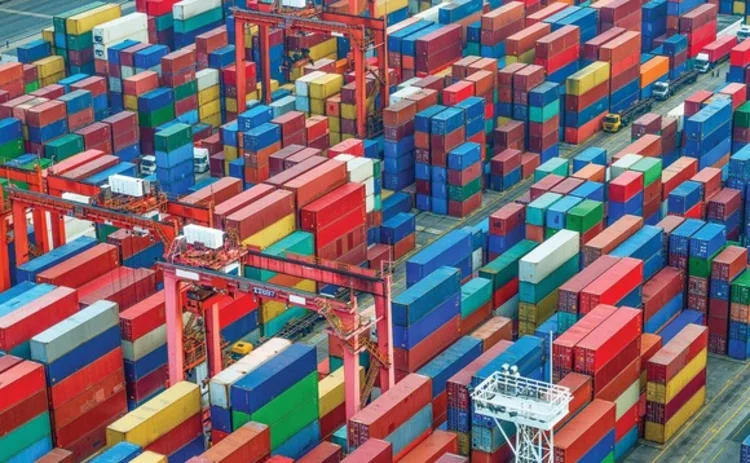
Analysis: Cargo theft on the rise

Need to know
- Cargo thieves used to target electronics and tobacco but now also steal food and drinks
- Crimes can be opportunistic or premeditated with much sophistication
- Some insurers provide goods owners with free risk management advice against theft
- Haulage companies operate with tight margins and don’t necessarilly want to spend money on preventative measures
International cargo theft has a huge impact on the frequency and severity of insurance claims and the problem is increasing.
“Industry sources show we are experiencing an estimated 5% year-on-year rise in the number of crimes classified as major losses within the Europe-Middle East-Africa region,” says Pablo Fuentes Loyola, UK head of marine at Zurich Insurance. “While historically cargo theft has mostly affected high-ticket items, such as electronics and tobacco, trends over the last decade or so show that lower-value items like food and drink tend to be targeted the most in terms of frequency, if not of absolute value.”
Both opportunistic and premeditated crimes are taking their toll, ranging from the slashing of plastic curtains on soft-sided vehicles parked in lay-bys to sophisticated forms of deception. For example, the fact that many drivers don’t speak much English can make them vulnerable to an imposter with a clipboard who tells them that the warehouse is full and that they need to deliver to an alternative one nearby.
Organised gangs are increasingly feeding off inside information, and some are also utilising cyber crime. Hacking into the transport database of a large haulier can produce full details of lorry movements, number plates and driver names – enabling fake vehicles to arrive half an hour early for loading.
Interestingly, different corners in the industry volunteer quite different figures when it comes to quantifying cargo theft. TT Club reveals that the problem accounts for 10% of its reported claims during the past 10 years, Beazley finds that 40% to 50% of its cargo claims are theft-related and Cunningham Lindsey estimates that the proportion is more like one-third for the cargo claims it gets involved with.
This situation probably reflects varied risk appetites from different insurers, but a marked difference in the actual reporting of crime incidences around the world also muddies the waters and helps to explain why different commentators can highlight different crime hotspots.
Paule Mayoh, consultant risk surveyor at RSA, notes: “Some countries such as the UK, Netherlands, Belgium and Germany may be seen to have more incidents because industry and association members and law enforcement agencies are more inclined to report and share data for statistical purposes.”
However, insurers expend considerable energy on evaluating their risks, obtaining requisite information from clients about their businesses and modes of transport and supplementing this with external data. Some even provide their clients with preventative solutions.
For example, Beazley gives goods-owner clients free risk management advice, which includes a review of the supply chain and the recommendation of standard operating procedures to be adopted. But this is not available to the hauliers it insures.
“Goods owners are on the whole prepared to devote the necessary management time but hauliers are less receptive to risk management because of the cost,” says Stephen Smyth, marine underwriter at Beazley.
Major barriers
Here lies the major barrier that needs to be overcome. Haulage companies operate in a very low margin business and often feel they can’t justify taking even basic safeguards.
Lance Carter, underwriter at Fiducia, says: “If haulage companies could get drivers to take more care, it would help. In an ideal world, it should reduce premiums. But we don’t live in an ideal world, and haulage companies are incapable of throwing money at a problem if they are not paid enough by goods owners.”
It is not as though there is any shortage of proven methods available for reducing cargo theft. Encouraging drivers to use secure parking facilities rather than park by the side of the road can make a huge difference, and insider jobs can be combated by taking driver references, performing criminal record checks and having good interview procedures.
Reinforcing the plastic curtains at the side of lorries with wire mesh can prevent them being cut but will cost somewhere between two and five times as much as a standard curtain. Carter feels that less than 5% of loads in Europe use such reinforcements because of the expense.
Having security guards on ships, which has become much more prevalent since 2015, also involves a significant cost but there have been no incidences of piracy on ships which have had them on board, reports Jonathan Moss, partner and head of transport sector at law firm DWF.
With tracking devices, which are still a developing technology, opinions are more varied regarding effectiveness. Indeed, Graeme Blackie, head of marine at Cunningham Lindsey, has not come across any he would particularly recommend at the moment. Even more positive commentators still cite cost as a barrier.
Smyth says: “A lot of tracking we see at the moment protects the vehicle and trailer but not the load, but we are trying to introduce more cargo tracking. The technology is there but people are reluctant to pay for it.”
Goods owners and hauliers need to get ahead of the game and realise that suitable investment can benefit the bottom line by reducing claims and therefore premiums, and nowhere is this more true than in the area of cyber security.
Paul Vlissidis, technical director at NCC Group, says: “Cyber security still tends to be low down the list of priorities with those who haven’t experienced an incident. But if a system that oversees any kind of logistics business gets compromised or destroyed, then the whole thing grinds to a halt, so insurers, hauliers and customers really need to wake up.
“The hauliers have the main responsibility as it’s their systems that are vulnerable. They need to take more preventative steps and also to accept that, because the world is shifting so fast, they will probably be hit by something and so need a contingency plan to get back on their feet.”
Nevertheless, consultants and insurers could probably still be doing more to produce return-on-investment data that can make investing in risk management seem worthwhile. Even in a low-margin business, decision-makers are likely to be attracted to methods with a proven track record of improving profitability.
Further reading
Only users who have a paid subscription or are part of a corporate subscription are able to print or copy content.
To access these options, along with all other subscription benefits, please contact info@postonline.co.uk or view our subscription options here: https://subscriptions.postonline.co.uk/subscribe
You are currently unable to print this content. Please contact info@postonline.co.uk to find out more.
You are currently unable to copy this content. Please contact info@postonline.co.uk to find out more.
Copyright Infopro Digital Limited. All rights reserved.
As outlined in our terms and conditions, https://www.infopro-digital.com/terms-and-conditions/subscriptions/ (point 2.4), printing is limited to a single copy.
If you would like to purchase additional rights please email info@postonline.co.uk
Copyright Infopro Digital Limited. All rights reserved.
You may share this content using our article tools. As outlined in our terms and conditions, https://www.infopro-digital.com/terms-and-conditions/subscriptions/ (clause 2.4), an Authorised User may only make one copy of the materials for their own personal use. You must also comply with the restrictions in clause 2.5.
If you would like to purchase additional rights please email info@postonline.co.uk









